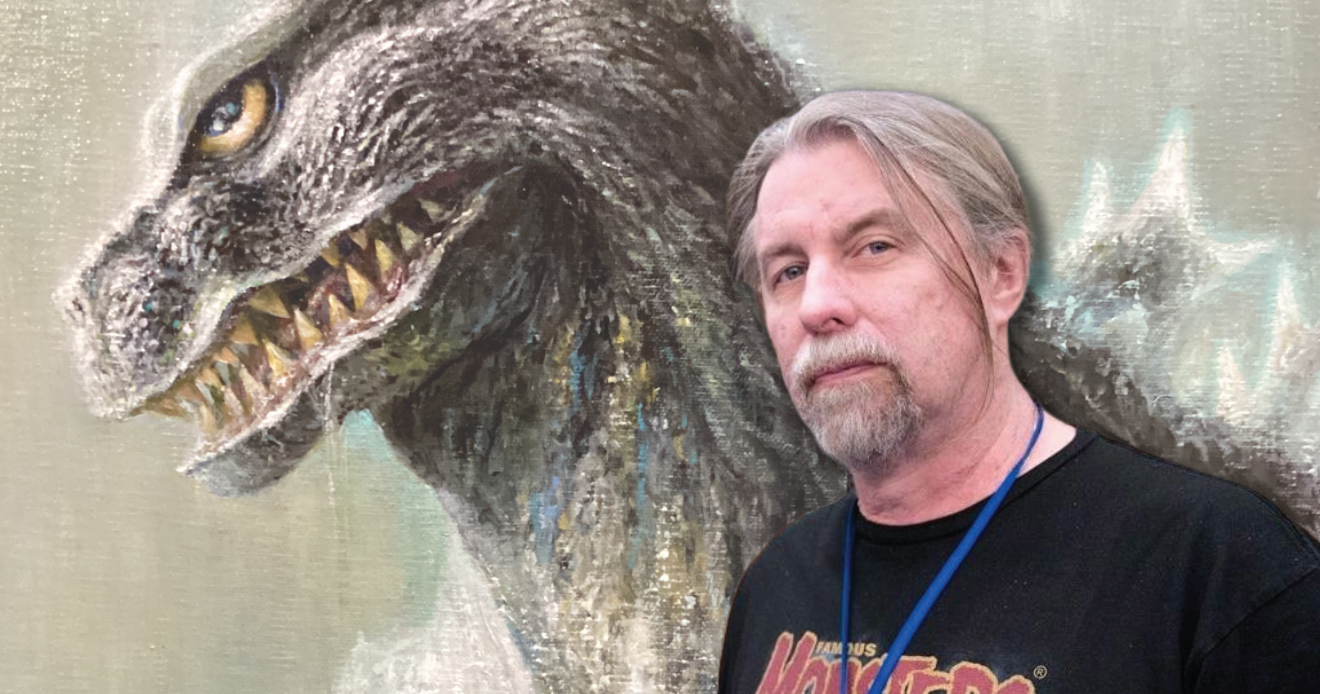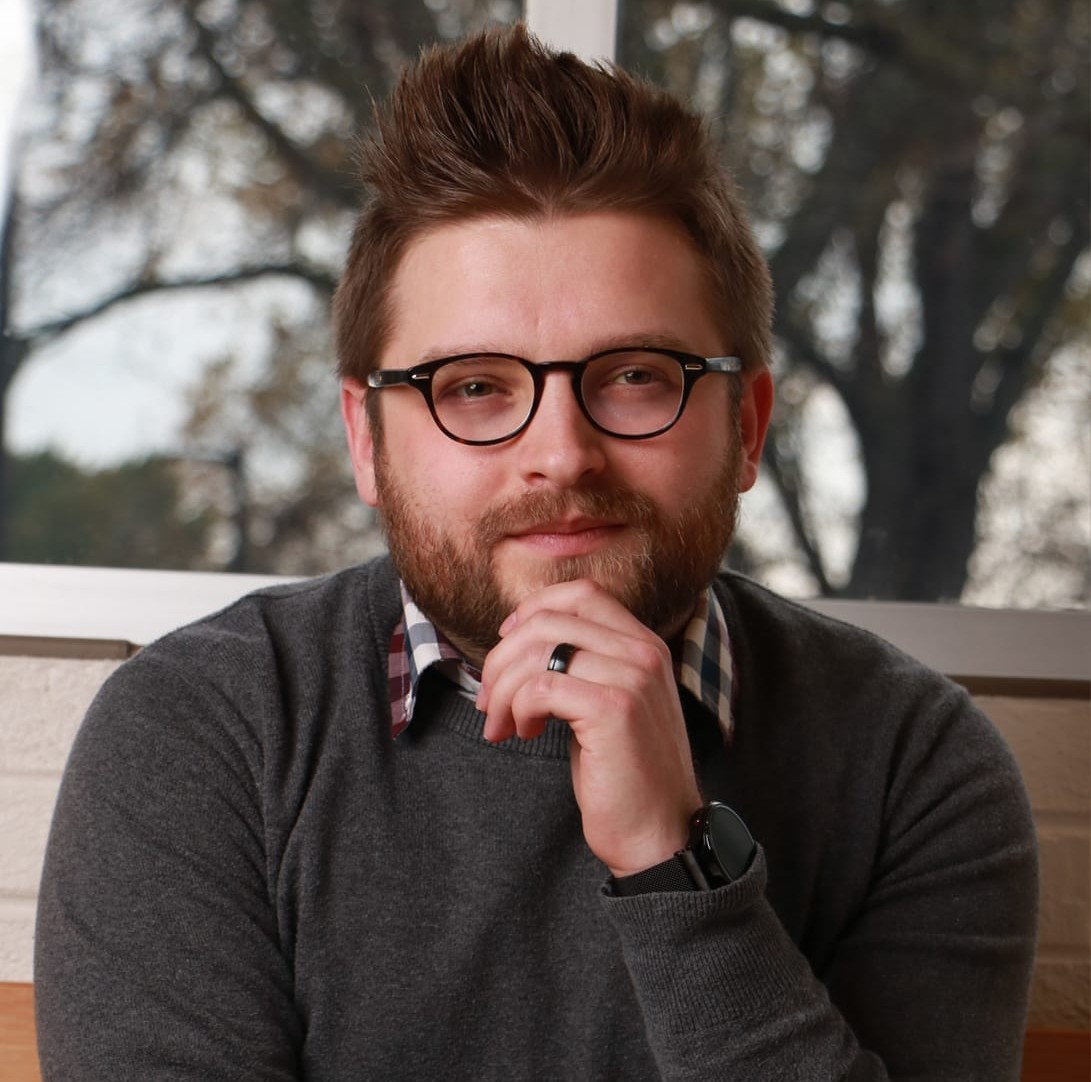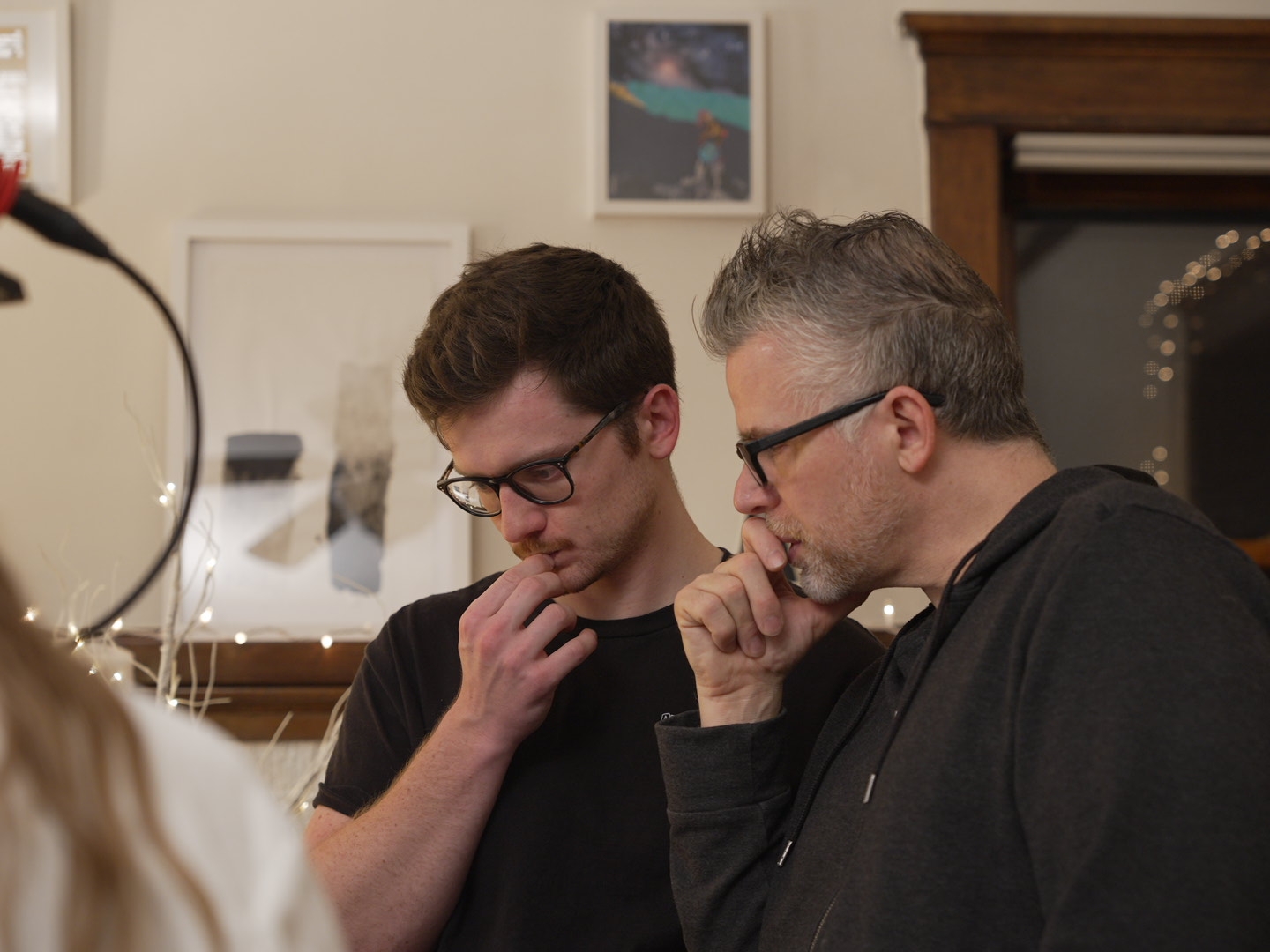Roger Corman.
The name immediately conjures up images of monster movies from the 50’s, horror period pieces of the 60’s and exploitation films of the 70’s. But the “King of the B’s” has a career far more eclectic than many realize.
Whether it’s directing such horror icons as Vincent Price, Boris Karloff, and a very young Jack Nicholson in various Edgar Allan Poe adaptations, or as a producer launching the careers of many Hollywood directors such as Ron Howard, Francis Ford Coppola, Jonathan Demme, Joe Dante, James Cameron… if you ever got a gig working for Corman, in any sort of capacity, it was best you take it! The same goes for actors who would later become A-listers or household names. His productions were an unofficial film school; the most hands on you could get.
His productions were economical, rushed and as a result, varied in quality. For example, Corman directed the original Little Shop of Horrors in 1961 in just under 2 days! That film would later become the inspiration for the musical, which then turned into a 1986 film. The design of its creature could jokingly be referred to as a predecessor to Godzilla’s future opponent Biollante.
Kaiju United took time to interview special effects artist Jeff S. Farley to share some of his memories of working for Corman and how both men would eventually have a brief brush with the King of the Monsters separately!
Born in Detroit, Michigan in 1926, Corman studied engineering at Standford University but wound up working in the mail room of 20th Century Fox.
Corman later worked for AIP (American International Pictures), which distributed several Showa era Godzilla movies in the 60’s and 70’s. In Corman’s time, AIP distributed the following Godzilla films: Godzilla Vs. The Thing & Destroy All Monsters as well as other Toho Non-Godzilla films Atragon and Frankenstein Conquers the World. Post Corman, AIP would distribute Yog: Monster From Space & Godzilla Vs The Smog Monster.
Corman left AIP in 1970 and started his own company, New World Pictures. Throughout the 70’s, New World got into the business of distributing foreign films to the U.S. When not making low budget affairs, they were winning Oscars. New World distributed Akira Kurosawa’s Dersu Uzula and Toho’s The Submersion of Japan, known in the U.S. as Tidal Wave. In the same vein as how the original Godzilla added scenes with Raymond Burr, TIDAL WAVE would feature added scenes starring Lorne Greene of TV’s Bonanza.
Corman sold New World Pictures in 1983 to start Concorde New Horizons. The “New” New World Pictures would eventually buy the rights to distribute, and re-edit, The Return of Godzilla, which eventually became ‘Godzilla 1985′. Things came full circle when added scenes were shot of Raymond Burr at the Pentagon for G85 after being inspired by Lorne Greene’s participation in Tidal Wave.
Special Effects Artist Jeff Farley Q&A
KU: What was the first Roger Corman movie you worked on?
JF: Oh gosh, that’s a really good question. After a while, gigs start blending in together in my memory. Something before Carnosaur. I think Slumber Party Massacre II was the first one.
KU: How did you first get involved?
JF: I figured it out early on, by reading magazines like Cinemagic, Fangoria, and Famous Monsters of Filmland. Cinemagic was the first one to really show how to do effects from an amateur standpoint…
After seeing Equinox in 1971 and finding out that I lived in the area it was shot in, I became friends with the guys who made it. They really helped by giving me information that I never would have found elsewhere. Forry Ackerman also was a friend and like he did for so many others, he gave me a lot of help and encouragement. After meeting Ray Harryhausen at Forry’s, I ended up getting a couple of weeks dremeling urethane casts of tarantulas for Kingdom of the Spiders and a few years later, some props for Danny DeVito’s directing debut, The Ratings Game, I went over to Makeup Effects Lab & Lance Anderson’s shop before going over to John Buechler’s. It seems like I worked for almost every production company around that time and I did a lot of Charlie Band’s films while working at MMI culminating in a trip to Italy for the production of Arena. I did a lot of Charlie Band’s films. Even recently, I thought I had escaped doing a Cannon movie but nope, turns out I worked on Death Warrant, and that was one of their final productions.
KU: What was your first impression of meeting Roger Corman?
JF: This was after Carnosaur, and while we were in production on the William Shatner show for the Sci-Fi Channel, now known as SyFy. Corman was attentive, very nice, and would walk around looking at our stuff and ask a lot of questions.
KU: Were you nervous?
JF: No, not nervous, because we were there to do our job, but he had a certain way of speaking to you. He was very literal and direct and somehow, very calming.
KU: I remember hearing or reading that Corman wanted the dinosaurs to walk upright, were there ever any disputes over those ideas?
JF: There was discussion about how to portray the dinosaurs physically, John Carl Buechler called me up and asked me to bring in every reference book on dinosaurs in my collection. This was a big deal because with Jurassic Park announced, it was Corman’s idea to utilize John Brosnan’s novel [Carnosaur], a property that he had owned since the 1980’s, about 10 years before Michael Crichton book was published. He knew that he could have his own version in theaters prior to the Universal release. Though Don Glut was our consultant and was indispensable in making sure we were adding some scientific plausibility, Corman decided that the dinosaurs in his film would walk upright in that classic Hollywood b-movie way. We all just went along with it. The late Mike Jones gave me a lot of inspiration with his sculpture of the Deinonychus. His was the most “current” of the designs in terms of stance.
KU: Have you worked on any Corman films since CARNOSAUR?
JF: They never brought me back on for any of the sequels. But they used so much stock footage, why bother? On the first film, I was one of the top paid people to work on the effects, and they let me go to save money. I had done my part by that point with the sculpture and molds done. Later though, I was hired to work at his Venice studio lot, fabricating a bunch of embryos for The Unborn.
KU: I read there was a suit made of the Tyrannosaurus for an actor to wear, much in the same vein as Godzilla. Were you involved in the creation of it?
JF: I sculpted the head. I have a photo of it somewhere. John used Kane Hodder’s (Jason in Friday the 13th’s 7 – 10) body cast to construct the suit. That head was the last thing I did on the show and I was off when I heard they ended up not using the suit. To be honest, it looked pretty stocky. The suit was re-used for Fred Olen Ray’s Dinosaur Island, it may have worked for that film since it was a more campy approach, but definitely would not have worked for Carnosaur. They should’ve used that suit for a future movie as a baby T-rex or side kick.
KU: Maybe have Raphael Sbarge run through the streets of San Diego with a baby T-rex?
JF: (laughs) Yeah, maybe.
KU: Did your work on Carnosaur eventually lead to you working on, what eventually became the 1998 Godzilla?
JF: No, Mike Hood at Precision Effects had been awarded the job of doing a few sculptures for Sony Imageworks, and since he knew I was a huge fan of Godzilla, he had already introduced me to the guys over at Trendmasters. I knew the art director at SI since I had done some work for him in the past, and that helped me get onto the project.

Photo courtesy of Jeff Farley.
KU: Was this at the time when Jan De Bont (Speed) was still attached as director?
JF: Yes. I was working on some prototypes for the Trendmasters Godzilla Wars bendy figures for a couple of weeks in the summer of 1994, possibly early June. They were based off of the designs from Godzilla Vs. Mechagodzilla II, which was the most recent film in the series that was playing in Japan at the time. So I went down to Little Tokyo here in L.A., and found a book, all in Japanese, on the making of that particular movie. So, we used that film as a reference. The design sheets from Trendmasters were a little different and I used the book more than their designs. Chris Bergschneider, Dirk von Besser, and I worked on it together, and made models of Mothra, Rodan, Mechagodzilla, and King Ghidorah. I would come up with a design, and then Trendmasters would make some changes reflecting their original designs.
KU: That must’ve been infuriating?
JF: Not really. I was just happy to be working on it and get paid. Besides, it was their privilege to do so, as well as the fact that there may have been contractual reasons I wasn’t aware of. Since we had three days to produce the sculpture for them, Sony bought a model kit, we made a mold of that, and did an armature and clay pour which could be broken down into separate parts that we could each more efficiently work on. It wasn’t very detailed, but I worked on the head and gave it a more furrowed brow and curled upper lip which the guys at Sony really liked because it made the character look so mean. Chris accentuated the muscles on the body form while Dirk worked on the tail. Our work was all done in my garage studio for SI to bid on the project, but I believe that Stan Winston had already been awarded the feature as his name did come up during our time on the job. Right after, I left for Romania to work on The Primevals, so there wasn’t any time to think about it.
…It just hit me. Now that I realize it, I attempted to get a job on a Godzilla movie. I tried to work on Godzilla Vs. Biollante.
KU: How did that almost happen?
JF: I went to Japan with Screaming Mad George to work on Teito Taisen (Tokyo: The Last War) in 1989. I overheard many of the crew members were going to be working on Godzilla Vs. Biollante and I practically begged for a job on it. That would’ve been a dream come true to work on a Toho Godzilla movie!
KU: I almost confused your movie with Toho’s THE LAST WAR, which is a super depressing movie.
JF: I seem to recall seeing that when I was a kid, but that film was definitely depressing. We made Teito Taisen for an independent company, EXE, but Toho ended up officially picking it up for distribution. The dailies for the film were screened at Toei Tokyo Studios so though we never made it to Toho, but we did get on the Toei lot. In fact, there were some actors from past Godzilla films like Yoshio Tsuchiya (The Controller of Planet X in Monster Zero, and several Sci-Fi, Godzilla, and Akira Kurosawa films from Toho) in the film as well as Minami Kaho. Kyusaku Shimada portrayed Teito Taisen’s main villain and made an appearance in Shin Godzilla. We also had Tetsuro Tamba who was in the James Bond film You Only Live Twice as “Tiger Tanaka” & the Prime Minister Yamamoto in The Submersion of Japan.
KU: Which Roger Corman released!
JF: Yeah, what did he retitle it as? …was it Earthquake or something?
KU: Corman released it as Tidal Wave.
JF: That’s right! Anyway, I remember I had a great time in Japan and many of our crew members partied really hard… but they worked even harder. Our director was future J-Horror producer Takashige Ichise. Legendary stunt coordinator Phillip Kwok was also on the show. George brought over Yata Moto, Rodd Matsui & Dave Matherly. Masahiro Okano was our local guy on the crew. They were all very wonderful. The exterior sets while we were shooting near Sasebo City were impressive to say the least. After about a month on Kyushu, we traveled to Tokyo where we would take the train to set nearby at Camp Drake which had been the location of Evil Dead Trap a year before. Our first couple of days there, we were able to witness the filming of an episode of Mobile Cop Jiban which involved a lot of tokusatsu work. That was particularly fun. When we had time off, we’d do the tourist thing and to save money, I’d eat at this ramen place around the corner from my hotel. All-in-all was a memorable experience.
KU: You’re still active, is there anything you’re currently working on now?
JF: Abruptio will be released theatrically in September. The newly re-formed Anchor Bay Entertainment is distributing. The release date is still pending. The Primevals is premiering on Amazon Prime and the Full Moon streaming service currently with a multi-disc Blu-ray set releasing in September also. September is a busy month, I’ll also be appearing at the Music Box Theater in Chicago with Nick Benson for a screening of The Blob (1988)
KU: Well Jeff, thank you for taking the time and granting me a chat!
JF: Gosh! Thank you! I appreciate this, Chris!
In 1999, Roger Corman hosted the Godzilla Mania Festival, part of AMC’s MonsterFest, introducing several Showa and Heisei era Godzilla movies.
In a 2019 interview with the Hollywood Reporter, Corman said this about SEVEN SAMURAI and GOJIRA both being nominated the same year for the Japanese Academy Award for Best Picture in 1954. “Its an example of two extremes of Japanese filmmaking. The film has a wildness and insanity to it. I was particularly impressed by the special effects. They were both good and over-the-top. Today, you’d say they had a campy quality.”





